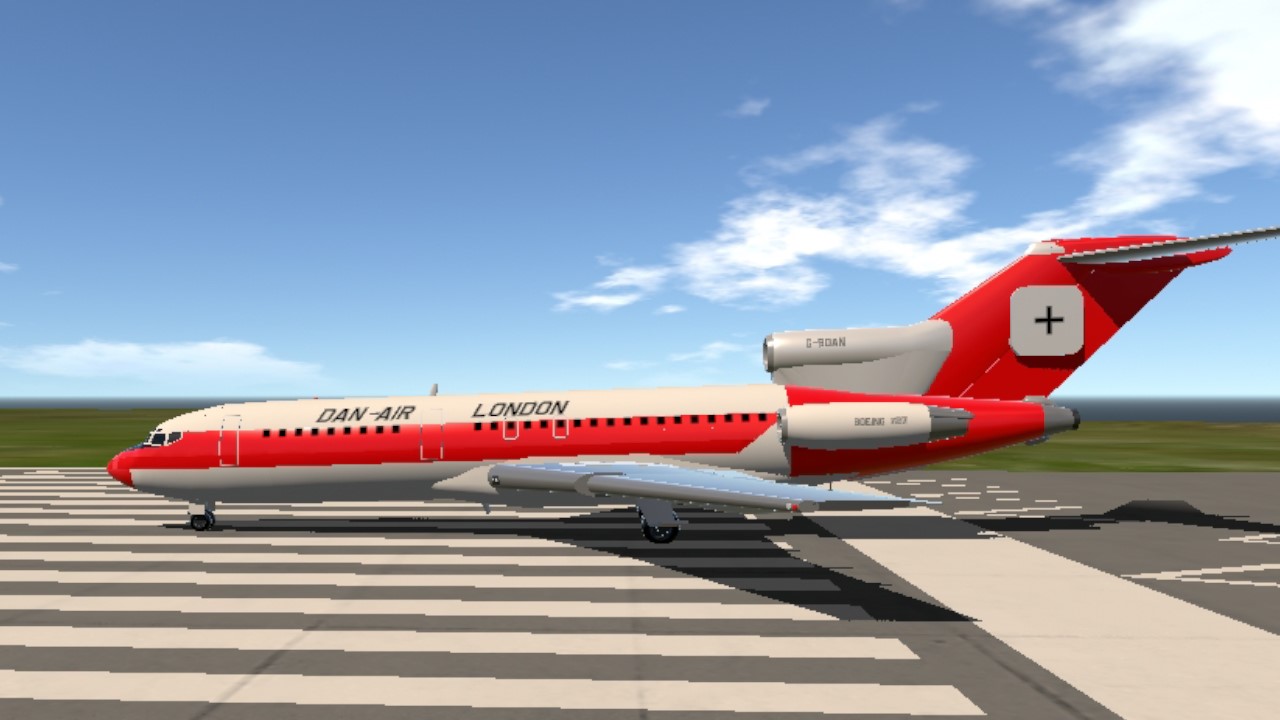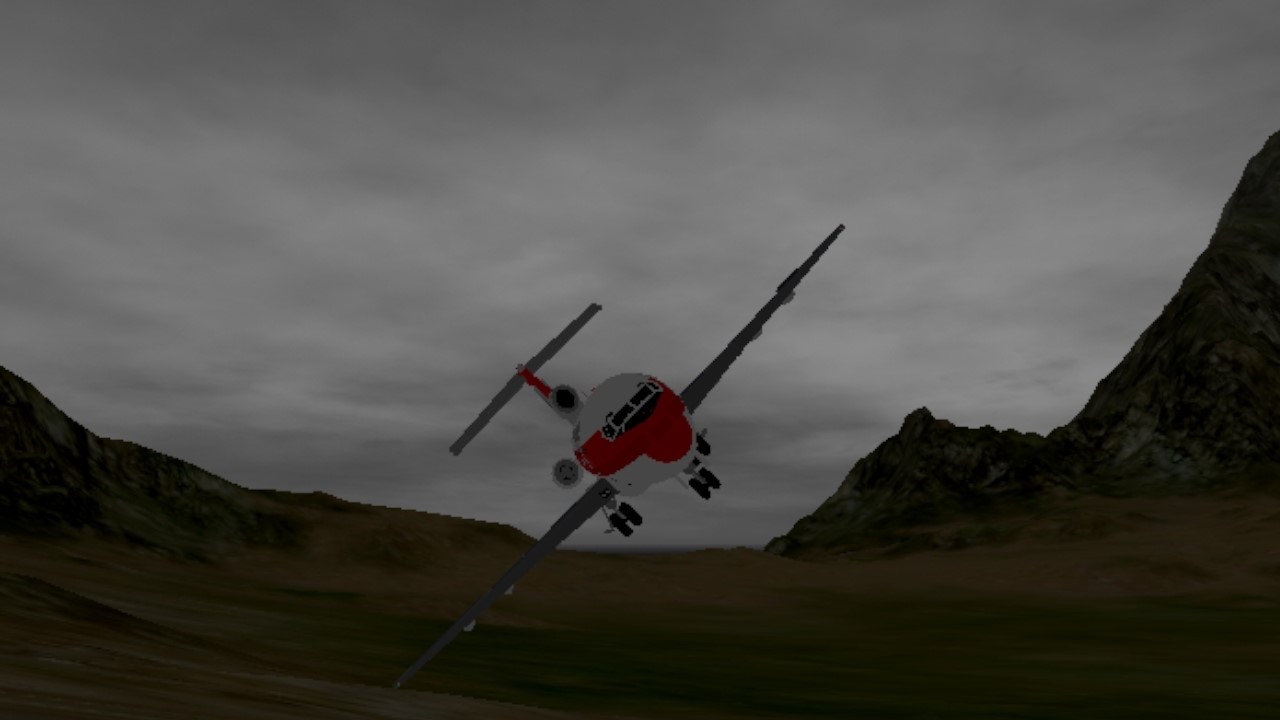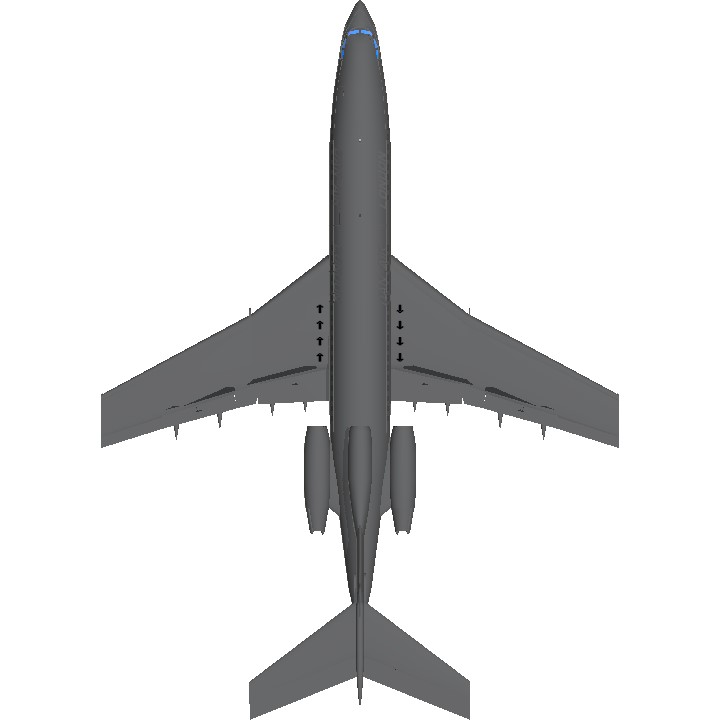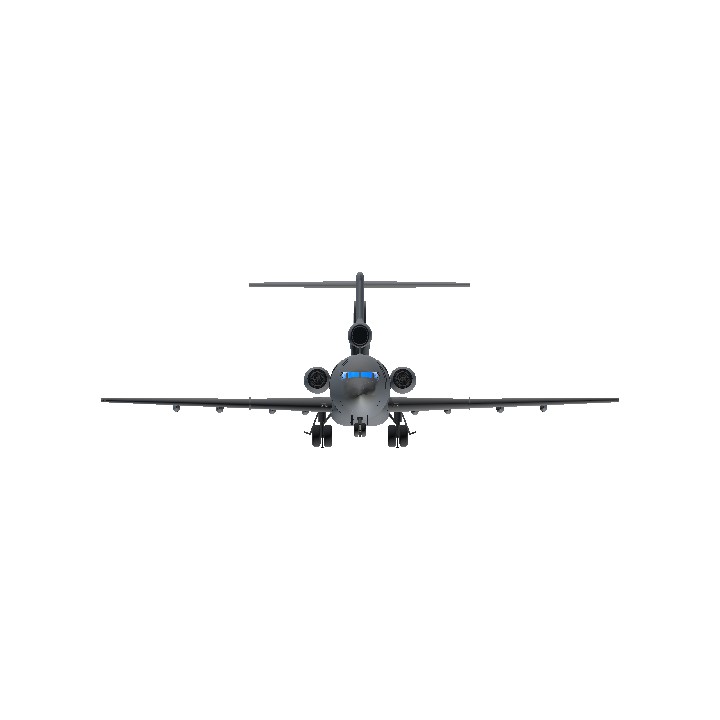Boeing 727
The Boeing 727 is an American narrow-body airliner that was developed and produced by Boeing Commercial Airplanes. After the heavier 707 quad-jet was introduced in 1958, Boeing addressed the demand for shorter flight lengths from smaller airports. On December 5, 1960, the 727 was launched with 40 orders each from United Airlines and Eastern Air Lines. The first 727-100 rolled out on November 27, 1962, first flew on February 9, 1963, and entered service with Eastern on February 1, 1964.

A stretched 727-200 of Iberia
The only trijet aircraft to be produced by Boeing, the 727 is powered by Pratt & Whitney JT8D low-bypass turbofans below a T-tail, one on each side of the rear fuselage and a center one fed through an S-duct. It shares its six-abreast upper fuselage cross-section and cockpit with the 707 that was also later used on the 737. The 133-foot-long (41 m) 727-100 typically carries 106 passengers in two classes over 2,250 nautical miles [nmi] (4,170 km; 2,590 mi), or 129 in a single class. Launched in 1965, the stretched 727-200 flew in July 1967 and entered service with Northeast Airlines that December. The 20 ft (6.1 m) longer variant typically carries 134 passengers in two classes over 2,550 nmi (4,720 km; 2,930 mi), or 155 in a single class. A freighter and a "Quick Change" convertible version were also offered.
The 727 was used for domestic flights and on international flights within its range. Airport noise regulations have led to hush kit installations. Its last commercial passenger flight was in January 2019. It was succeeded by the 757 and larger variants of the 737. There have been 353 incidents involving the Boeing 727. Production ended in September 1984 with 1,832 having been built.
Dan-Air
Dan-Air (legally Dan Air Services Limited) was an airline based in the United Kingdom and a wholly owned subsidiary of London-based shipbroking firm Davies and Newman. It was started in 1953 with a single aircraft. Initially, it operated cargo and passenger charter flights from Southend (1953–1955) and Blackbushe airports (1955–1960) using a variety of piston-engined aircraft before moving to a new base at Gatwick Airport in 1960, followed by expansion into inclusive tour (IT) charter flights and all-year round scheduled services. The introduction of two de Havilland Comet series 4 jet aircraft in 1966 made Dan-Air the second British independent airline after British United Airways to begin sustained jet operations.

The early 1970s saw the acquisition of a pair of Boeing 707 long-haul jets for use on affinity group and Advance Booking Charter flights to Canada and the United States. In 1973, Dan-Air became the first British airline to operate the Boeing 727 trijet. By the mid-1970s, it had become Britain's largest independent airline, both in terms of passengers carried and fleet size, operating the country's largest charter fleet. This was also the time a Dan-Air staff member, Yvonne Pope Sintes became Britain's and Europe's first female jet captain.
By the early 1980s, the airline had also become the leading operator of fixed wing oil industry support flights, operating a fleet of 13 Hawker Siddeley 748 turboprops between bases on the Scottish mainland and the Shetland Islands under contract to firms involved in North Sea oil exploration. In 1983, Dan-Air was the first airline to launch commercial operations with British Aerospace 146 regional jet. The acquisition of an Airbus A300 in 1986 marked Dan-Air's widebody debut and the late 1980s saw a major expansion of their scheduled activities, including the introduction of two-class services on trunk routes. Passenger numbers peaked in 1989 at 6.2 million (1.8 million on scheduled services).
Lack of vertical integration with a tour operator, and an inefficient fleet mix dominated by ageing Boeing 727s and BAC One-Elevens made Dan-Air uncompetitive, resulting in increasing marginalisation and growing financial difficulties as well as a change in senior management and strategy by the early 1990s. Following unsuccessful attempts to merge Dan-Air with a competitor, the ailing airline was sold to British Airways in 1992 for the nominal sum of £1.
Dan-Air Flight 1008
Dan-Air Flight 1008 was a fatal accident involving a Boeing 727-46 jet aircraft operated by Dan Air Services Limited on an unscheduled international passenger service from Manchester to Tenerife. The crash occurred on 25 April 1980 in a forest on Tenerife's Mount La Esperanza when the aircraft's flight deck crew wrongly executed an unpublished holding pattern in an area of very high ground; it resulted in the aircraft's destruction and the deaths of all 146 on board (138 passengers and eight crew). Flight 1008 was Dan-Air's second major accident in ten years and the worst accident involving the deaths of fare-paying passengers in the airline's entire history.

G-BDAN, the aircraft involved, seen in 1974, six years prior to the accident.
Real Photos

The flight path of Flight 1008

G-BDAN, the aircraft involved, photographed on 5 April 1980, 20 days before the accident
Specifications
Spotlights
- NormalCv580enjoyer 1.3 years ago
General Characteristics
- Predecessor Boeing 727-023 American Airlines
- Created On Android
- Wingspan 101.4ft (30.9m)
- Length 140.7ft (42.9m)
- Height 34.4ft (10.5m)
- Empty Weight N/A
- Loaded Weight 30,163lbs (13,681kg)
Performance
- Power/Weight Ratio 1.206
- Wing Loading 10.5lbs/ft2 (51.1kg/m2)
- Wing Area 2,882.7ft2 (267.8m2)
- Drag Points 52022
Parts
- Number of Parts 463
- Control Surfaces 5
- Performance Cost 2,382






Great work bro!👍